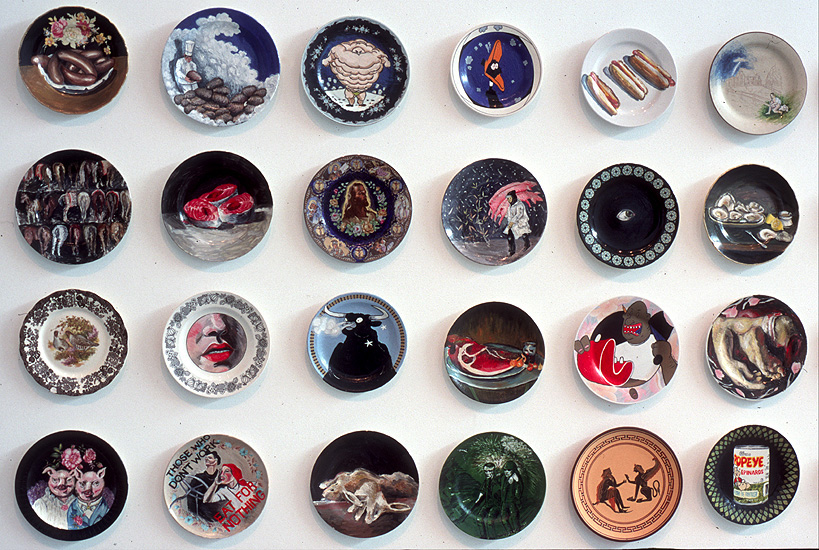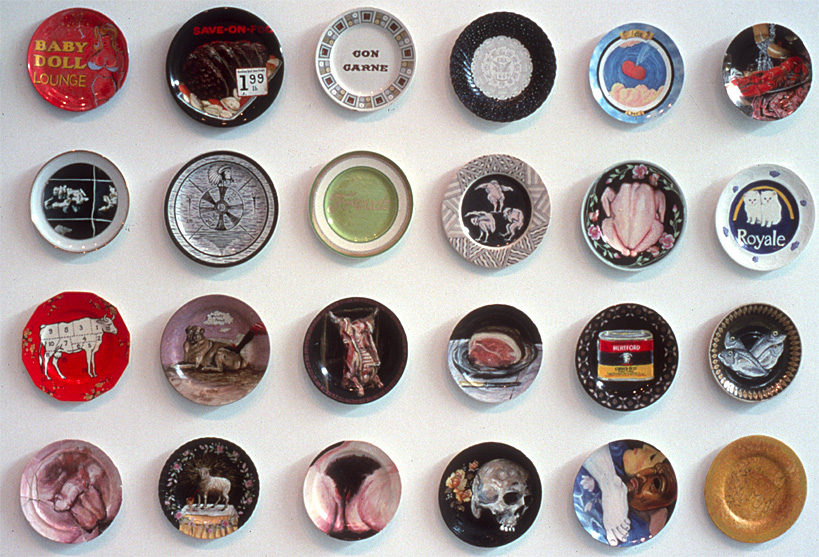Repast
Repast
Oil paint on ceramic plate
1997–1999
This work is an allegory, bringing together animal sacrifice and monoculture, the still life as painting genre, the alienation of human labour, and the commodity fetish. Decorative and mass-produced plates have been turned into art objects. They reference famous works of art as well as the folk/craft tradition of painting on plates.
Much of my work comes out of this Western obsession with producing systems, in collections of an aesthetic or epistemological order, to advance notions of good taste and a shared common knowledge. The juxtaposition of several registers reflects a desire to make sense of the hidden power structures at work in all forms of representation. This is largely done through the fragmentation and deterritorialization of the sources at hand.
I am interested in how still life was considered a low art genre, one that served to reflect the status of an emerging bourgeois subjectivity in 17thand 18th-century Northern Europe. The lack of human presence within still life was supposed to make one reflect on the perishability of the objects present, and ultimately on death. Objects in fact were filling in for human presence and human relations. This is also the rationale of the commodity fetish as laid out by Marx in Das Kapital. This extends to the status of art objects as possessions: I am what I own, what I display conspicuously.
The work was also inspired by Claude Levi-Strauss’ book The Raw and the Cooked: two things distinguish humans from animals, our ritual treatment of food and our use of language; all human cultures prepare their food through cooking or preserving it from rot; then there is the added supplement of how one cooks or prepares the food being a signifier of class and prestige, which is conferred onto the consumer.



